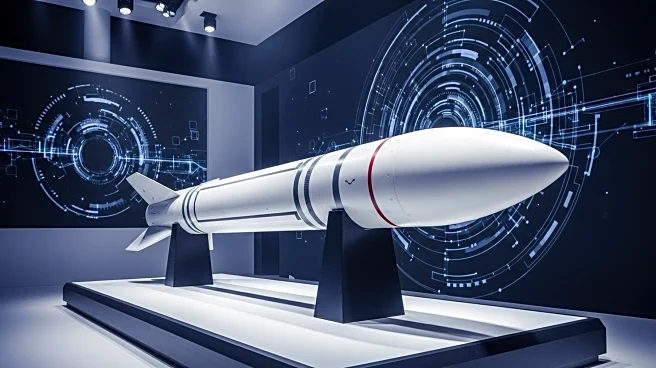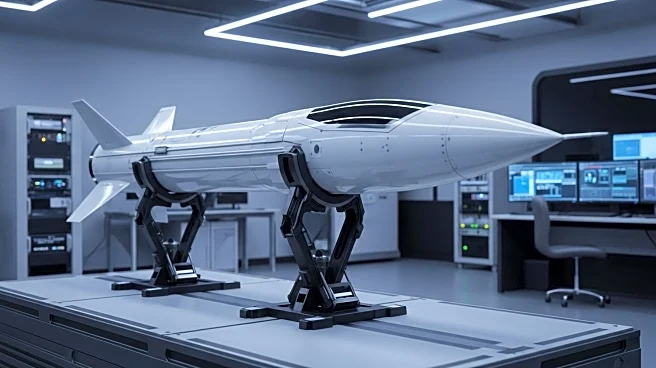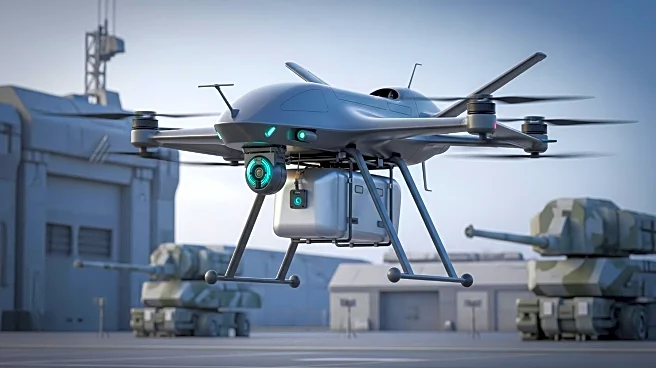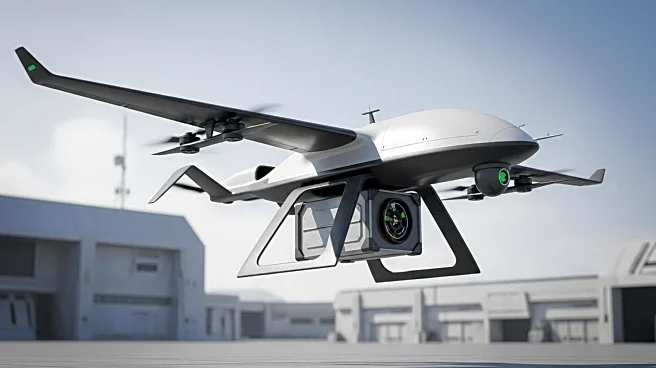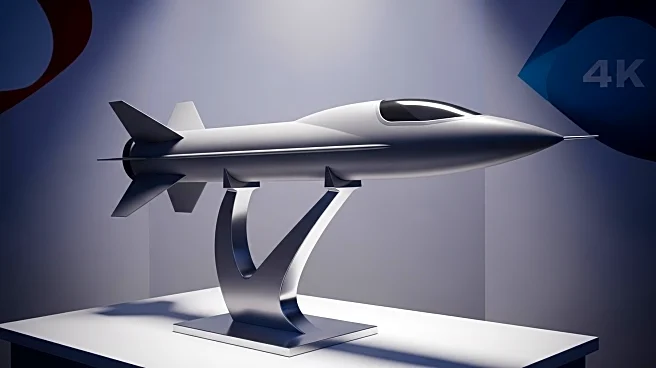What's Happening?
Lockheed Martin has introduced a new variant of its Precision Strike Missile (PRSM), known as Increment 4, at the Association of the U.S. Army's annual convention. This variant features a combined-cycle propulsion system, integrating a ramjet with a solid rocket motor, which extends its range to up to 1,000 kilometers. The missile design includes mid-body aerodynamic strakes and four aft-mounted control surfaces, with a ventral air scoop positioned forward. Lockheed Martin's Missiles and Fire Control division displayed a one-quarter scale model of the missile, confirming its identity as PRSM Inc. 4. The missile also features a radome-like fairing on the nose, suggesting an enhanced seeker capability, possibly involving active or passive radio frequency technology. Flight testing is expected to begin soon, according to Paula Hartley, Lockheed's general manager of Tactical Missiles.
Why It's Important?
The unveiling of the PRSM Increment 4 is significant for the U.S. military as it represents advancements in missile technology, potentially enhancing the Army's long-range precision strike capabilities. The extended range and advanced seeker technology could provide strategic advantages in various military operations, allowing for more effective targeting and engagement of distant threats. This development also highlights Lockheed Martin's ongoing innovation in defense technology, which could influence future military procurement and strategy. Additionally, the competition with other missile designs, such as the Blackbeard missile by Castelion, indicates a dynamic market for defense solutions, potentially impacting defense budgets and priorities.
What's Next?
Lockheed Martin plans to commence flight testing of the PRSM Increment 4 in the near future, which will be crucial in validating the missile's capabilities and performance. The Army's interest in testing alternative missile designs, like the Blackbeard missile, suggests ongoing evaluations to determine the most cost-effective and efficient solutions for long-range precision strikes. These tests and evaluations could lead to decisions on procurement and deployment strategies, influencing the future landscape of U.S. military capabilities. Stakeholders, including defense contractors and military strategists, will be closely monitoring these developments.
Beyond the Headlines
The introduction of advanced missile technology like the PRSM Increment 4 raises ethical and strategic considerations regarding the escalation of military capabilities. As nations develop more sophisticated weaponry, there is a potential for increased tensions and arms races, impacting global security dynamics. The focus on precision and extended range also reflects a shift towards more targeted and efficient military operations, which could redefine engagement rules and military doctrines.
